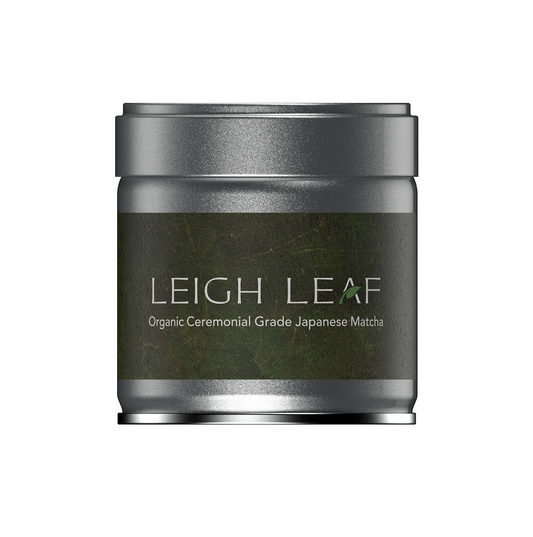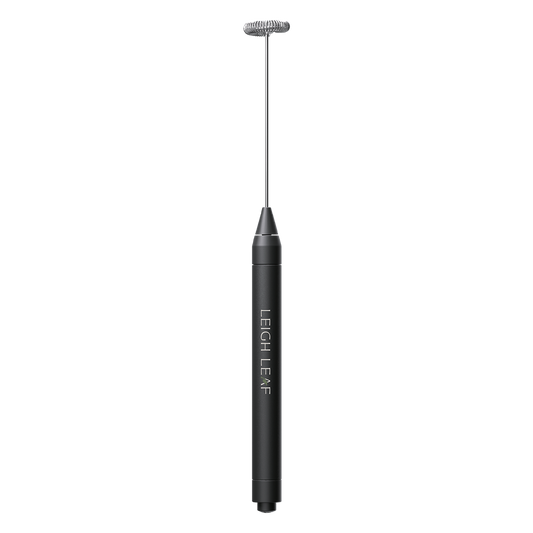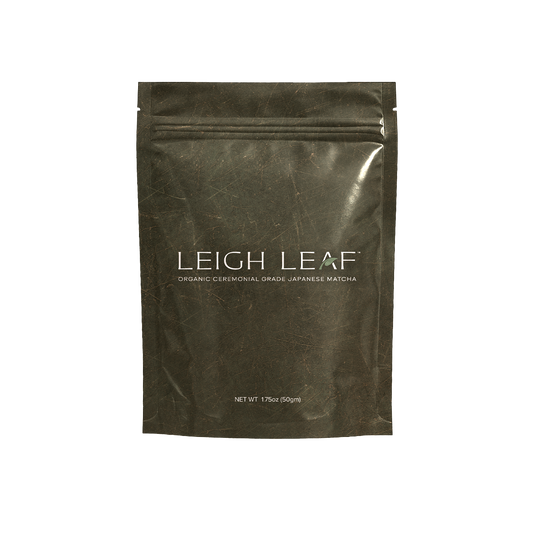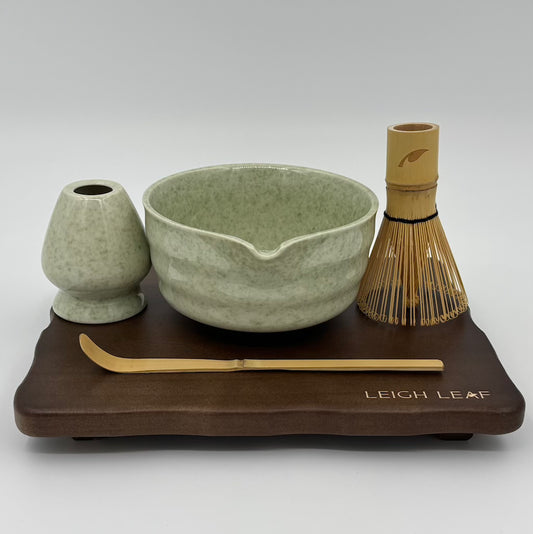
How To Make Matcha at Home
Share
Nowadays, it is more important than ever to find moments of calm and self-care. Enter matcha, the vibrant green elixir that not only delights the taste buds but also offers a serene escape from the chaos. If you're wondering, "How to make matcha at home," you're in for a treat.
Let's embark on a journey through the nuances of matcha, from its origin to the perfect homemade brew.
Table of content
What is Matcha?
Before we dive into the nitty-gritty of making matcha at home, let's unravel the mystery behind this emerald-hued powder. Matcha powder is made from specially grown and processed green tea leaves. It originated in China during the Tang Dynasty and spread to Japan.
What Does Matcha Taste Like?
You can imagine a symphony of flavors dancing on your palate. Matcha is an exquisite blend of sweetness, umami, and a slight bitterness, creating a harmonious taste that's truly one of a kind. The intensity of these flavors is a testament to the meticulous shading of tea plants before harvest, enhancing the chlorophyll content and elevating the taste.
Varieties of Green Tea
Understanding matcha involves delving into the broader realm of green tea. From Sencha to Gyokuro, there are as many varieties of tea as there are regions where they originate. Matcha, however, stands out due to its distinct production process, where leaves are shaded for weeks before harvesting, setting it apart from its green tea counterparts.
Caffeine in Matcha vs. Coffee
For those seeking an energy boost without the jitters, matcha might be your new best friend. While it does contain caffeine, the presence of L-theanine provides calm alertness, contrasting with the rapid energy surge and subsequent crash often associated with coffee. So, when you're craving focus without the coffee-induced rollercoaster, a cup of matcha might be just what you need.
Matcha Health Benefits
Beyond its delightful taste and gentle caffeine kick, matcha boasts an impressive array of health benefits. Packed with antioxidants called catechins, it's a powerhouse in promoting heart health and reducing the risk of chronic diseases. The chlorophyll in matcha not only gives it its vibrant color but also contributes to detoxification and a boost in mood.
Culinary Grade Matcha vs. Ceremonial Grade Matcha
Choosing the right matcha for your culinary exploits is crucial. While ceremonial grade matcha is prized for its purity and is best enjoyed on its own, culinary grade matcha is more versatile, lending itself beautifully to various recipes. If your goal is to master the art of making matcha at home, culinary grade might be your ideal starting point.
Where to Buy Quality Matcha
You can buy the matcha from one of the leading brand such as Leigh Leaf. Ensuring you start with high-quality matcha is the first step towards a successful brewing experience. Reputable online retailers and specialty tea shops often carry a selection of both ceremonial and culinary-grade matcha. Exploring customer reviews and seeking recommendations from seasoned matcha enthusiasts can guide you to the perfect source.
Is Organic and Third-Party Tested Matcha Important?
In a world where conscious consumption is gaining momentum, the source of your matcha matters. Opting for organic matcha ensures the absence of harmful pesticides, while third-party testing adds an extra layer of assurance regarding the purity of your green powder. Making matcha at home becomes a more gratifying experience when you know you're sipping on a product that aligns with your values.
How to Store Your Matcha
Preserving the freshness of your matcha is paramount. Store it in a cool, dark place away from sunlight and moisture. Airtight containers or tins with opaque walls are ideal for shielding your matcha from external elements. Keeping these storage tips in mind ensures that your matcha stays as vibrant and flavorful as the day you bought it.
Must-Have Tools
To embark on the journey of making matcha at home, you'll need a few essential tools. A bamboo whisk (chasen), a bamboo scoop (chashaku), and a fine-mesh strainer are essential. These tools not only contribute to the authentic preparation process but also elevate the visual appeal of your matcha.
How to Make Matcha at Home
Now, let's unravel the process of making matcha at home, transforming your kitchen into a serene tea ceremony space. Begin by sifting one to two teaspoons of matcha powder into your bowl using the bamboo scoop. This ensures a smooth, lump-free consistency. Add two ounces of hot water (not boiling) and whisk vigorously until a frothy layer forms.
How Much Milk? How Much Water?
The magic of matcha lies in its adaptability to different preferences. For a traditional preparation, use water only. If you crave a creamier texture, replace some or all of the water with your preferred milk—whether dairy or plant-based. Playing around with ratios will help you find the ideal balance for your palate.
Making matcha at home is not just a routine; it's a mindful practice that connects you with centuries of tradition. As the bamboo whisk glides through the vibrant green liquid, you're not merely making a beverage; you're crafting an experience.
Ultimately, the process of making matcha at home is a delightful journey that encompasses history, culture, and the subtle nuances of taste. From choosing the right matcha to perfecting your whisking technique, each step is an invitation to savor the present moment. Let each sip of matcha bring you a sense of calm and clarity as you embark on your matcha-making adventure.




